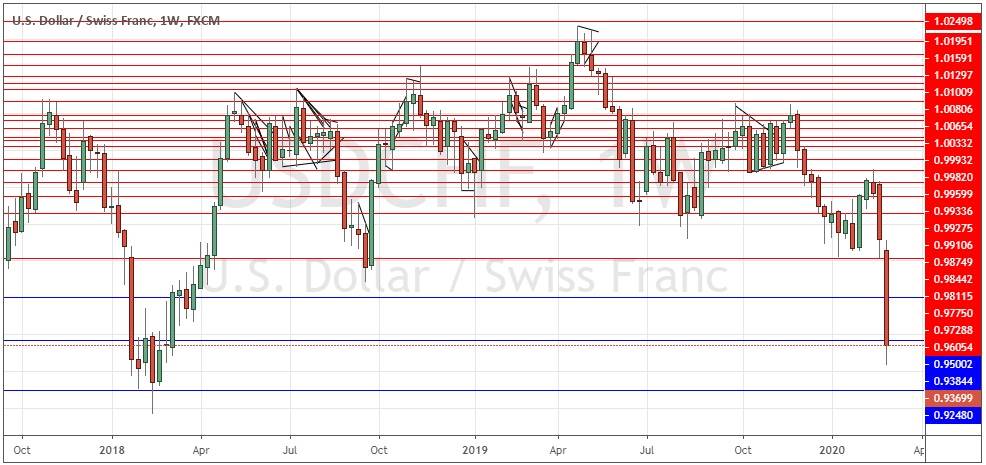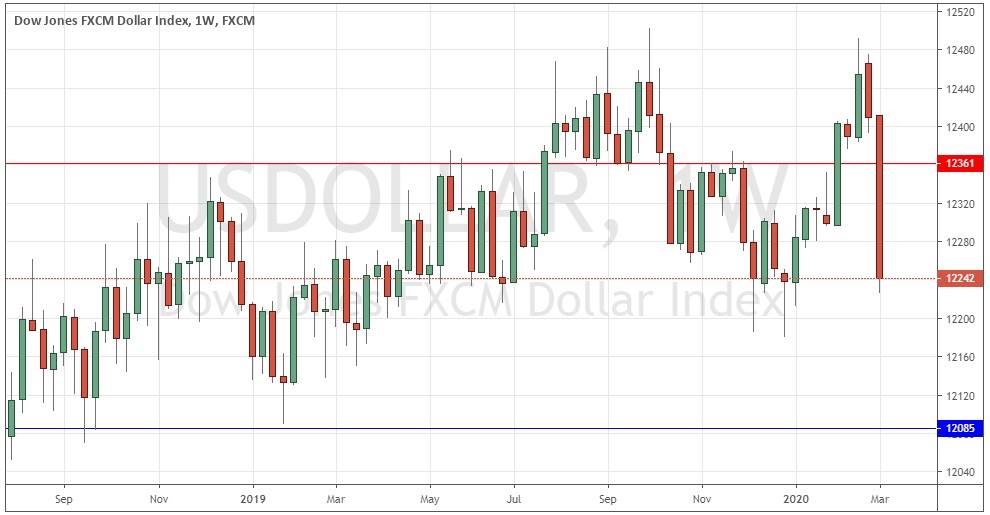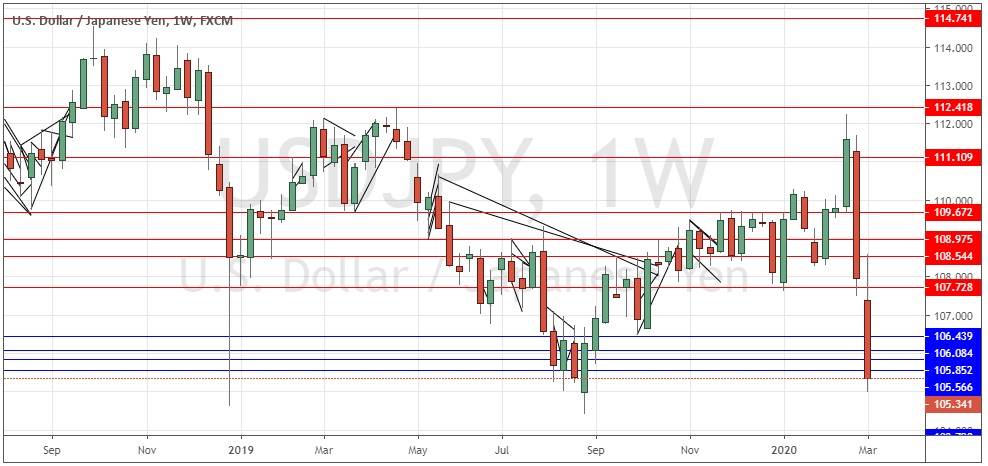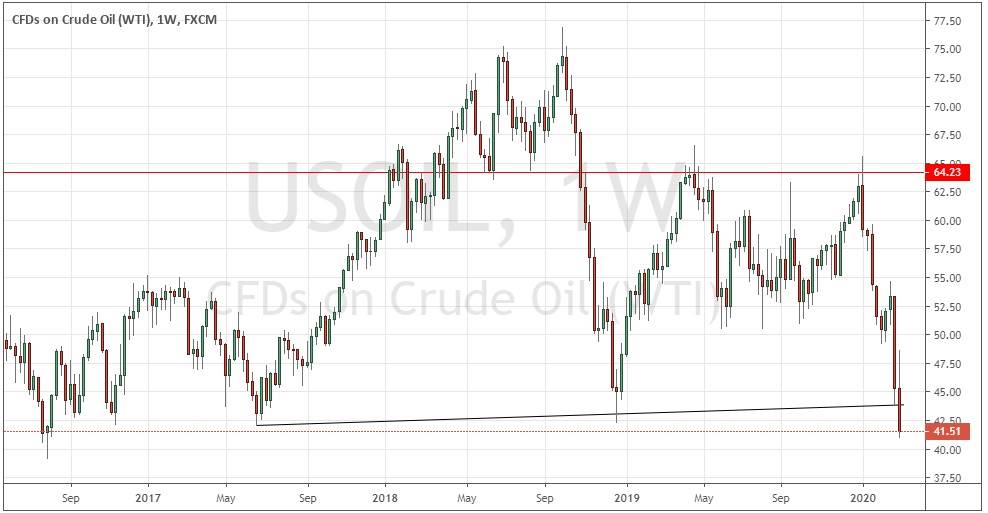The difference between success and failure in Forex trading is very likely to depend upon which currency pairs you choose to trade each week, and not on the exact trading methods you might use to determine trade entries and exits. Each week I am going to analyze fundamentals, sentiment and technical positions in order to determine which currency pairs are most likely to produce the easiest and most profitable trading opportunities over the next week. In some cases, it will be trading the trend. In other cases, it will be trading support and resistance levels during more ranging markets.
Big Picture 8th March 2020
In my previous piece last week, I forecasted that the best trade was likely to be short of the AUD/JPY currency cross. Over the week, this cross declined in value by 0.35% so this was a profitable trade.
Last week’s Forex market saw the strongest rise in the relative value of the Japanese Yen, and the strongest fall in the relative value of the U.S. Dollar.
Fundamental Analysis & Market Sentiment
The last week has seen a sharp change of market focus and sentiment, as the coronavirus has become a pandemic in everything but name, with Italy especially hard hit. Italy has today imposed a geographic quarantine on the entire Lombardy region, affecting 16 million people. In many countries, the amount of known cases continues to rise at the rate of a doubling every 6 days. However, China has managed to slow the rate of increase, suggesting that successful containment can be possible if strong measures are taken. Such measures have not yet been imposed anywhere in the west except for Italy.
It is clear that markets ended last week in strongly “risk-off” mode, and this is practically certain to continue into next week. Almost all stock markets have seen their benchmark indices fall by more than 10% from recent peaks, and the S&P 500 Index has been unable to close for two consecutive days above its key 200-day moving average.
The pessimistic market environment is caused by the increasing feeling that special measures will need to be taken to halt the spread of the virus that are going to have damaging economic impact. To cope with this, last week saw both the U.S. Federal Reserve and the Bank of Canada make cuts in their base rates of 0.50%.
The strong risk-off environment has boosted safe haven currencies while hitting stock markets, Crude Oil, the Canadian Dollar, and the U.S. Dollar hard. The primary beneficiaries of this flow have been the Japanese Yen, the Swiss Franc, and the Euro. Gold has also risen to new multi-year highs.
Interestingly, the Australian Dollar seems to be strengthening, possibly because of long-term buying at its recent 11-year low and possibly because China has been able to slow down its rate of new coronavirus infections.
It seems clear that everything will now depend upon whether the spread of the coronavirus is contained or not. If it is, we will probably see a strong rebound in stock markets. If it is not, we will see further flight to safety. It is unlikely this question of the virus will be resolved within days, so we can probably expect at least a few weeks of market turbulence and high volatility.
Technical Analysis
U.S. Dollar Index
The weekly price chart below shows last week printed a very large and bearish candlestick which closed very near the low of its range. It is below its prices from both 3 and 6 months ago for the first time in a long while, indicating a long-term downwards trend, triggered by the Federal Reserve’s emergency 0.50% rate cut. Overall, it seems likely that the U.S. Dollar will fall further over the coming week, but it may find some support near 12200.
USD/JPY
The USD/JPY currency pair fell strongly, closing below its prices from both 3 and 6 months ago, cutting through several support levels and closing near the low of its range. These are all very bearish signs of a long-term bearish trend and strong bearish momentum, but it should be noted that the price has been supported below 105.00 since 2016.
USD/CHF
The USD/CHF currency pair fell strongly, having already been below its prices from both 3 and 6 months ago, and now printing a very large and bearish candlestick this week which made the lowest weekly close in approximately 2 years. These are all very bearish signs of a long-term bearish trend and strong bearish momentum, but it should be noted that there is a strong inflection point at 0.9250.

WTI Crude Oil
WTI Crude Oil fell strongly again last week due to the reduction in demand caused by the coronavirus slowdown which has particularly affected China, a large consumer of crude oil.
The weekly price chart below shows that the price just made its lowest weekly close in approximately three and a half years. It is often relatively dangerous to short commodities, but the price of crude oil certainly could fall further over the next week.
Conclusion
This week I forecast the best trade is likely to be short of the USD and long of the CHF and JPY.



